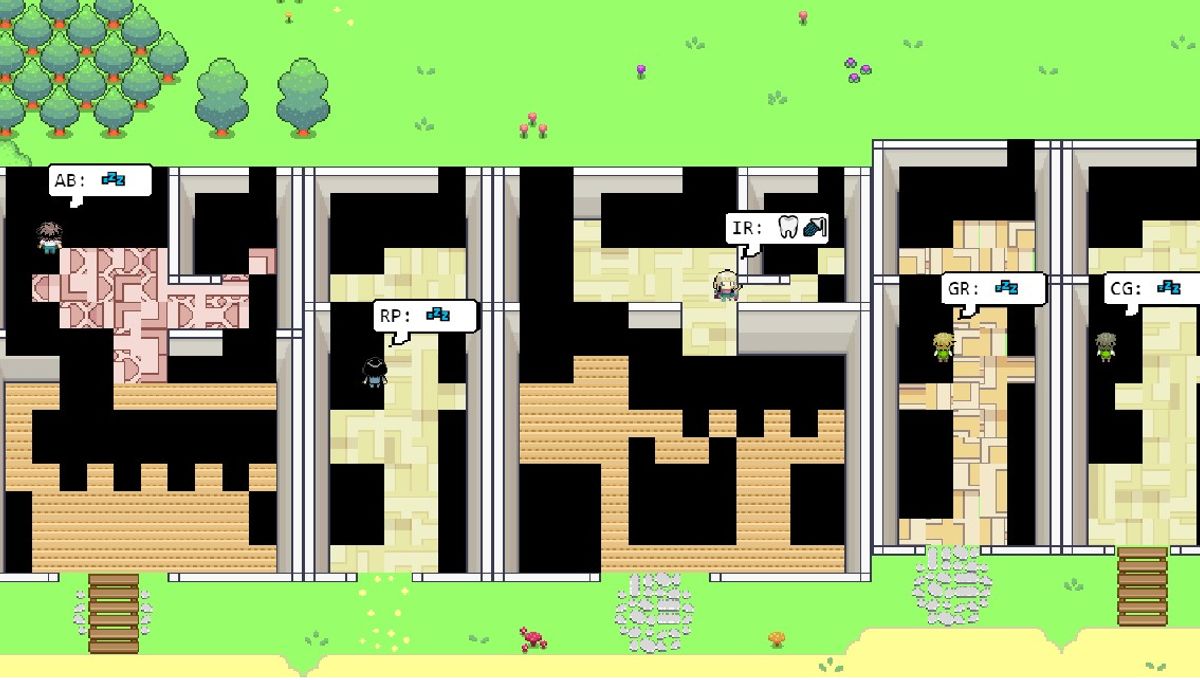
Everyone has played The Sims at some point in their life, but – like many games – the computer artificial intelligence (AI) has something to be desired. Luckily, the world has gone through somewhat of an AI revolution in the past few years, and it has finally made its way into video games.
Google, in collaboration with Stanford University, have created human-like video game characters that use AI to power their decision-making, in an effort to see how intricate they could make the world.
Named Smallville, the game follows 25 little characters in their daily lives as they act as human as possible, having typical routines like sleeping and eating, and making conversation with each other. Each character has their own life and goes about it as if they are real.
“Generative agents wake up, cook breakfast, and head to work; artists paint, while authors write; they form opinions, notice each other, and initiate conversations; they remember and reflect on days past as they plan the next day,” write the authors in a preprint paper, not yet peer-reviewed.
“To enable generative agents, we describe an architecture that extends a large language model to store a complete record of the agent’s experiences using natural language, synthesize those memories over time into higher-level reflections, and retrieve them dynamically to plan behavior.”
Each agent is powered by ChatGPT, into which the researchers inputted a single paragraph description that explained to the AI what the character was all about. They were given occupations, varying relationships with other agents, and even memories. From there, ChatGPT took over the decision-making with respect to each agent’s backstory, and a surprisingly interesting community emerged.
The agents took on their given lives and could retrieve memories as if they were real, interacting with each other in full character. The researchers simulated events, such as a Valentine’s day party, and the agents reacted accordingly by inviting others to the party anonymously and asking each other out on dates. When the “party” happened, they coordinated to turn up together.
The researchers concluded that integrating AI into this small video game enabled it to accurately replicate human social behavior. If such models could be integrated into larger games, it could significantly improve NPC behavior and immersion, creating thriving worlds of realistic interactions.
Unfortunately, great AI power requires intense computational power. Generative AIs require a huge amount of hardware to run well, particularly as they expand their abilities. This can be seen with Elon Musk’s recent suspected purchase of GPUs in bulk in the hopes of creating his own version, while OpenAI’s latest iteration of ChatGPT, GPT-4, performs noticeably slower than the last generation. Integrating such models into computer games would likely be far too much for most people’s hardware, so sadly it might be a while before we have the Sims: AI edition.
Still, the simulation (which you can watch in full here) is absolutely mind-blowing to watch and gives us a glimpse into the future of fully-immersive games.
The preprint is published to arXiv.
Source Link: Stanford Scientists Put ChatGPT Into Video Game Characters And It's Incredible